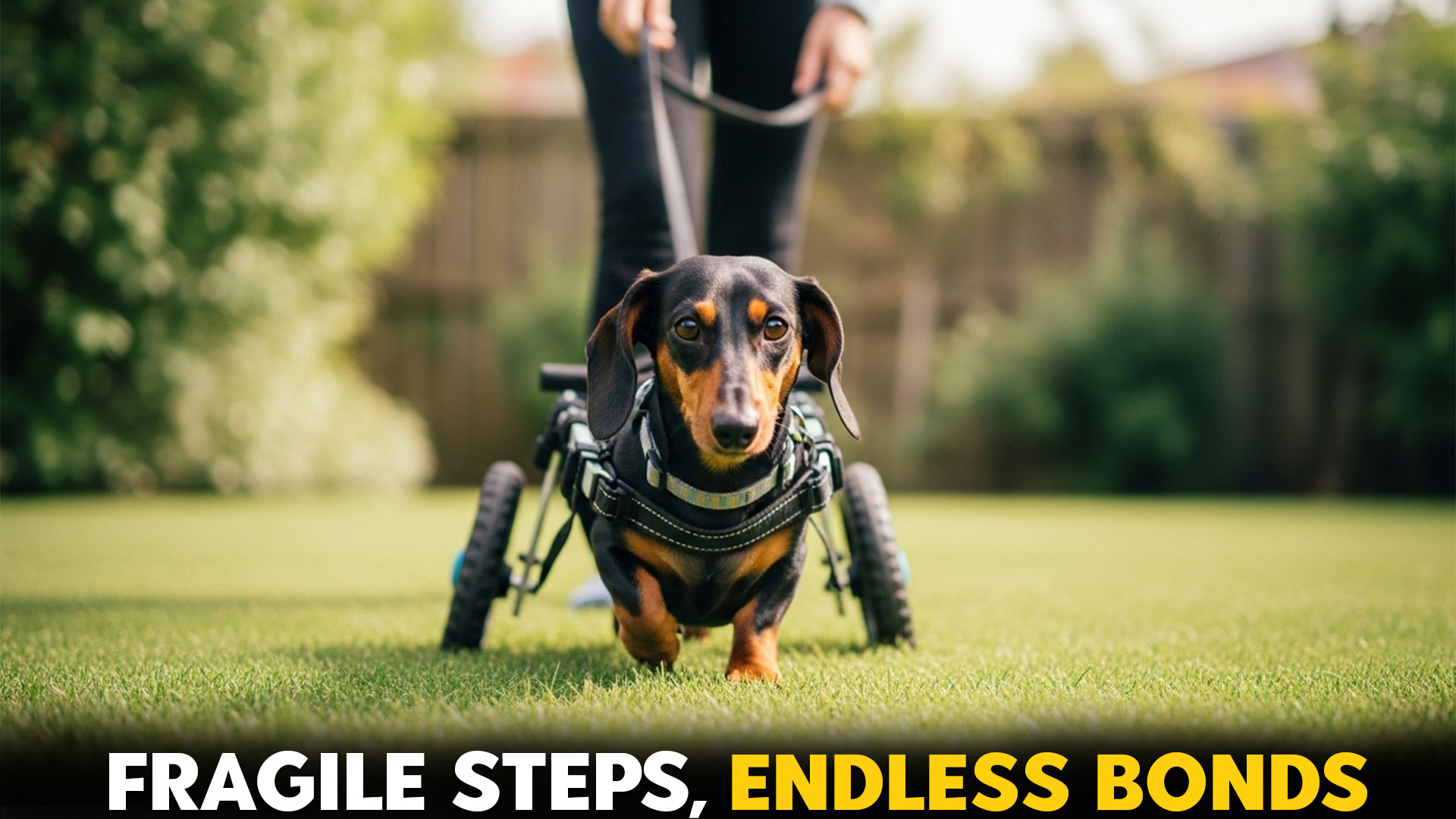It’s tough to watch a dog struggle with movements that should come naturally. Some dogs are predisposed to mobility issues due to genetics, body structure, or chronic health conditions.
Hip dysplasia, elbow dysplasia, and intervertebral disc disease are common challenges that can make walking, running, or even jumping painful.
Mobility problems don’t just affect movement—they impact a dog’s overall happiness, energy levels, and quality of life. Without attention, these issues can lead to muscle weakness, weight gain, and discomfort that grows over time.
Certain breeds are more vulnerable, and recognizing the risks early can help owners understand why some dogs face these struggles more than others.
In this guide, we’ll explore seven dogs most at risk of mobility issues, uncovering the factors behind their vulnerabilities and why keeping an eye on joint health matters from the start.
Unhealthy Dog Breeds with Mobility Issues
1. Dachshund

When it comes to dogs prone to mobility issues, Dachshunds are a prime example. Their long spine and short, muscular legs make them charming yet vulnerable, and even playful activities can strain their body.
These small but brave dogs were bred as hunters, giving them an energetic and tenacious personality—but their unique structure puts them at higher risk of developing serious back problems that could hinder the dog’s mobility.
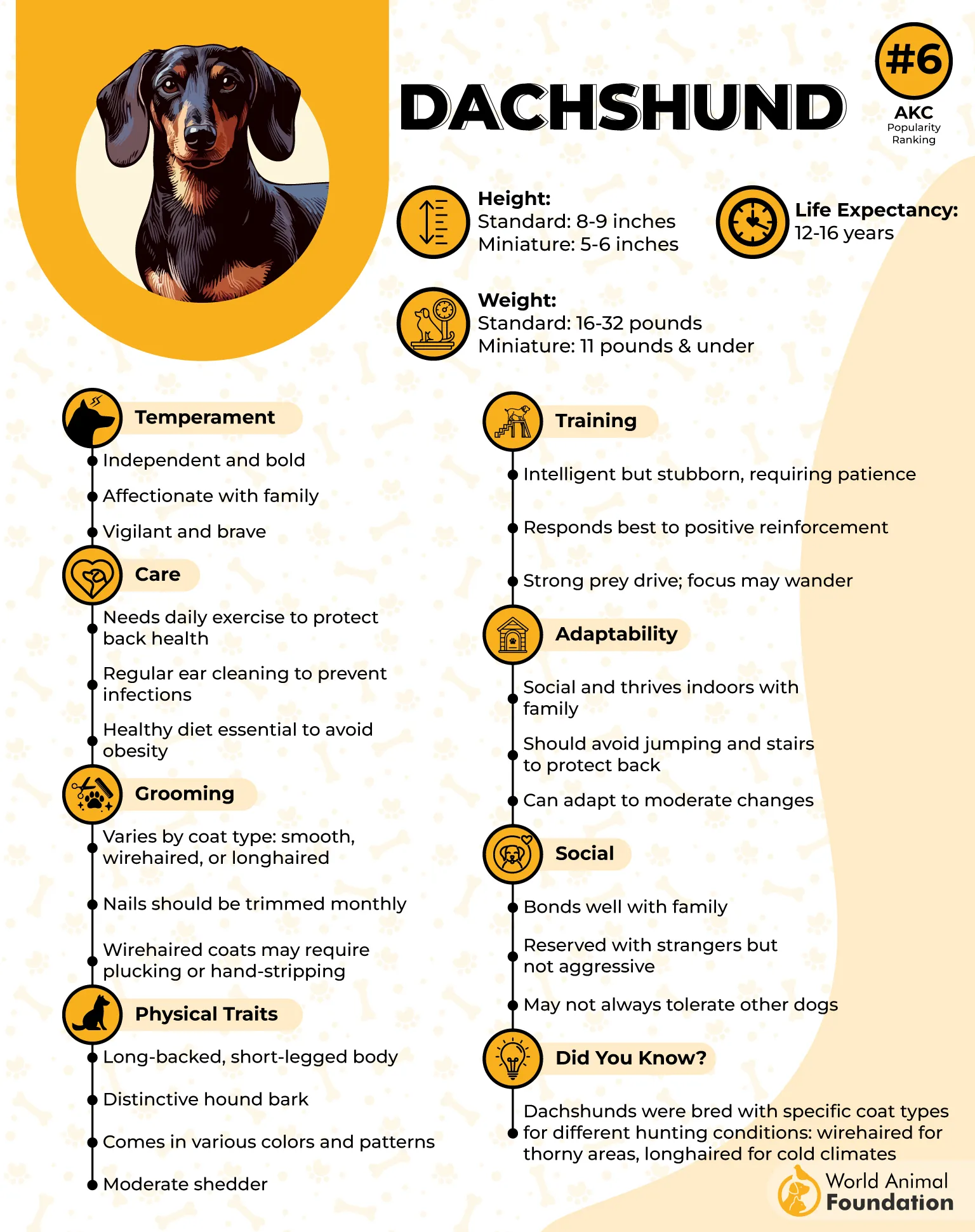
Even routine movements like climbing stairs or jumping onto furniture can cause strain, making it crucial to monitor their activity and protect their spine.
Mobility Health Concerns
As per PetMD, Intervertebral Disc Disease (IVDD) is the most common issue in Dachshunds, affecting up to 25% of them. Symptoms like limping, dragging paws, or trouble walking are early signs of a dog’s mobility problems that should not be left untreated.
Another concern is a luxating patella, where the kneecap slips from its normal position, leading to hopping or limping.
Maintaining a healthy weight and supporting a dog’s joint health can reduce the risk of these painful mobility issues and improve their quality of life.
2. German Shepherd
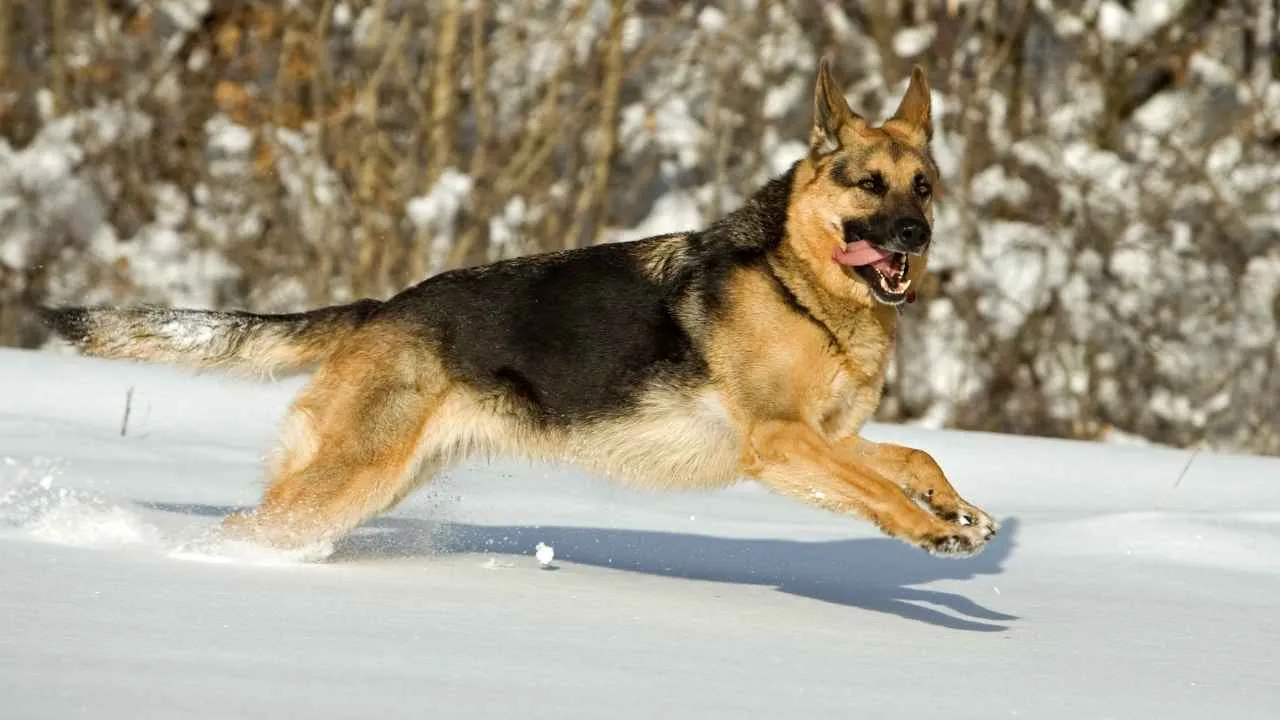
Watching a once-active dog struggle to move can be heartbreaking, and energetic, larger breeds are often at the greatest risk. German Shepherds, with their strong, muscular bodies and high drive, are especially prone to joint discomfort and spinal problems as they age.
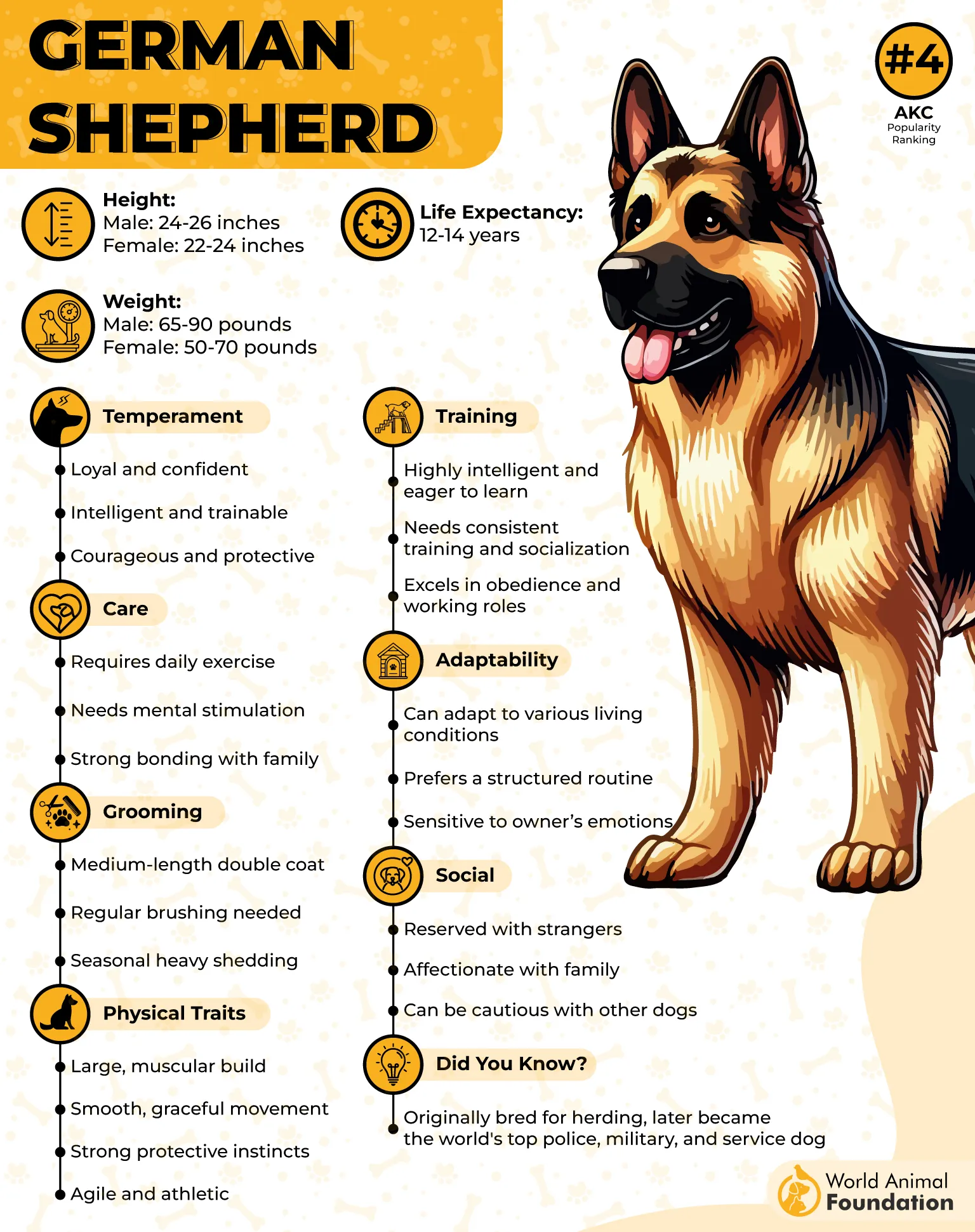
Known for intelligence, bravery, and loyalty, these dogs thrive on activity and mental stimulation. However, their active lifestyle and genetic conditions can contribute to early joint problems and mobility challenges if left untreated.
Every energetic leap or playful dash can challenge their hips and elbows, sometimes causing stiffness or subtle joint pain. Every energetic leap or playful dash can challenge their hips and elbows, sometimes causing stiffness or subtle pain. Watching for early signs of discomfort is crucial to keep their joints strong.
Mobility Health Concerns
Degenerative Myelopathy is a neurological disorder that slowly impairs mobility, causing weakness in the hind legs and difficulty standing. While there is no cure, physical therapy, along with a healthy diet, can help preserve muscle function and movement.
Elbow and hip dysplasia are common joint problems affecting German Shepherds, often leading to pain, limping, and reduced range of motion.
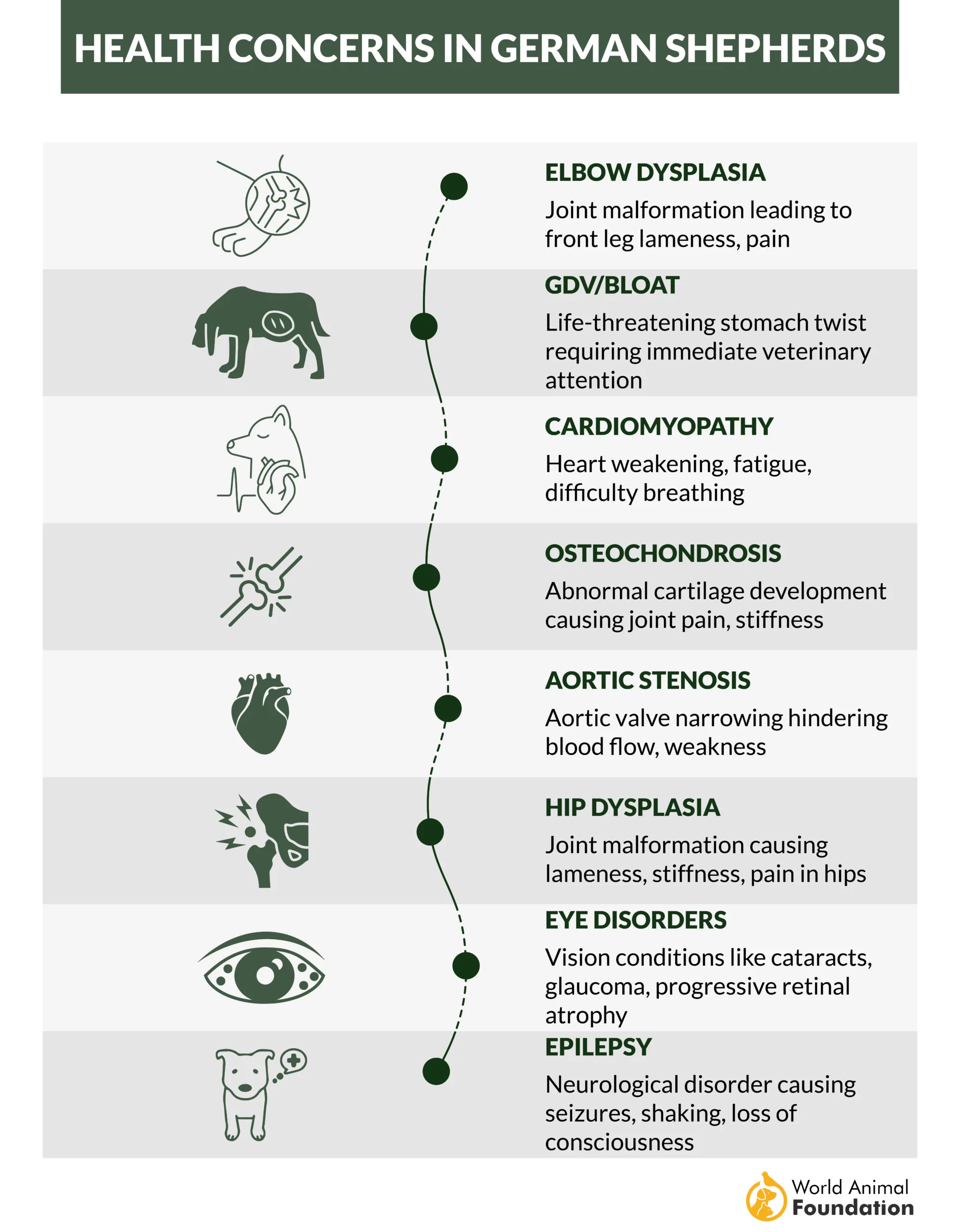
Weight management through a balanced diet, joint supplements, anti-inflammatory medications, and controlled regular exercise is key to slowing disease progression. Early detection in the form of the PennHIP test can predict the risk of developing these mobility issues.
3. Labrador Retriever
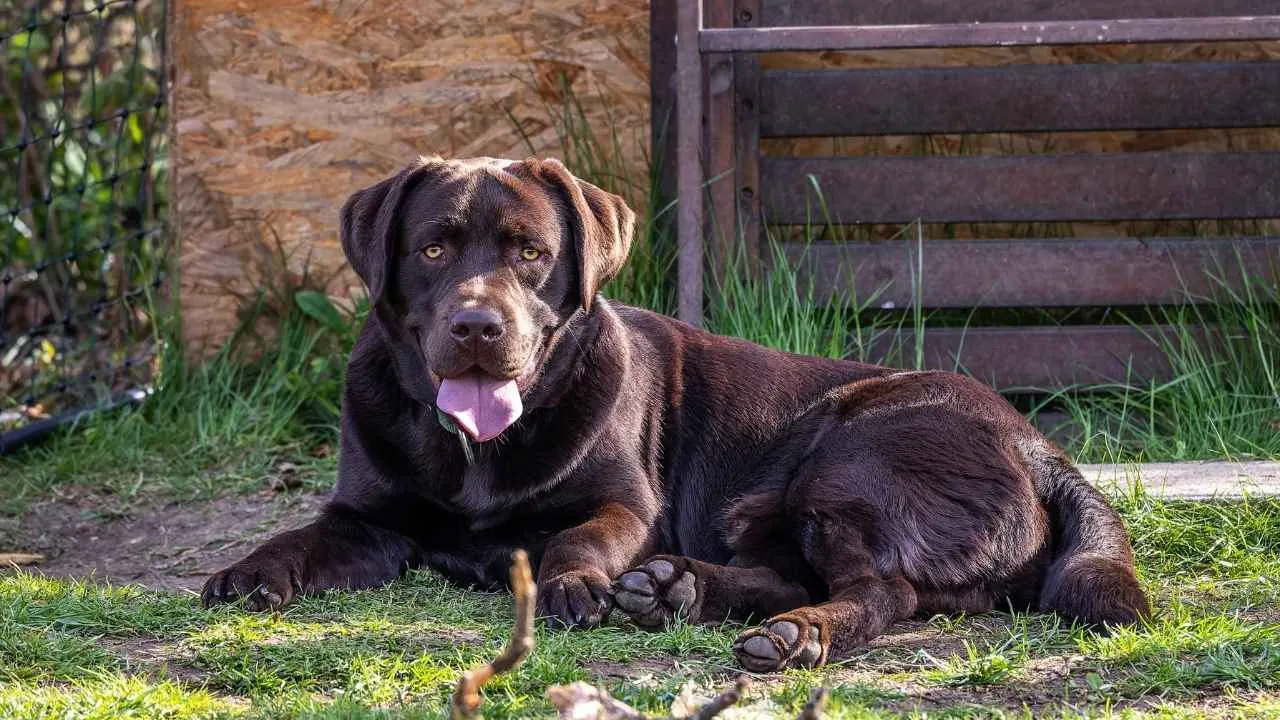
Labrador Retrievers, known for their boundless energy and friendly nature, are prone to mobility issues due to their genetic makeup and joint vulnerabilities.
These versatile large dogs excel as family companions, service animals, and hunting partners. But their active lifestyle, combined with a predisposition to joint issues, can lead to early mobility challenges.
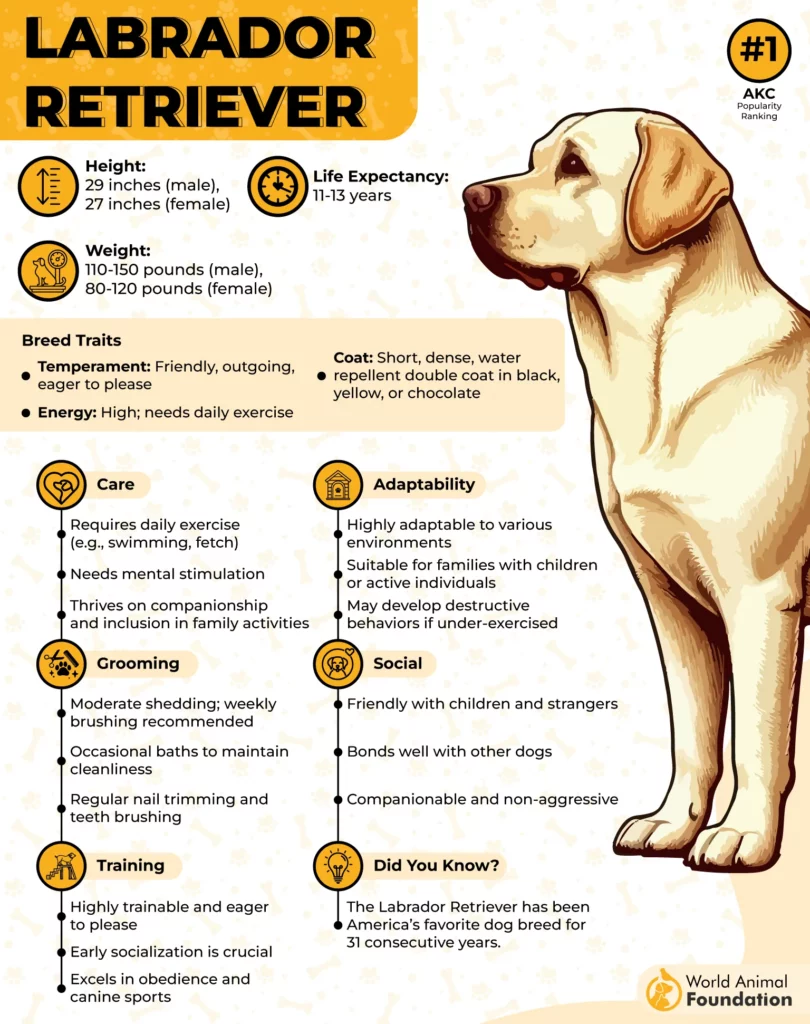
Even routine activities like running, jumping, or playing fetch can strain their hips, knees, and shoulders, especially if they carry excess weight or lack muscle support.
Mobility Health Concerns
As per WebMD, hip, elbow, and shoulder dysplasia are common in Labs, often appearing as early as 4 months. Signs include limping, stiffness, decreased activity, joint pain, changes in gait, and loss of thigh muscle mass.
Knee injuries, including cruciate ligament rupture and occasional patellar luxation, can impair mobility. Surgery, joint supplements, or long-term medications are often required.
Exercise-Induced Collapse is a rare genetic condition where Labs weaken or collapse after prolonged activity in warm weather, showing how genetic predisposition can affect a dog’s mobility.
4. Golden Retriever
It’s hard to watch a dog struggle with movement, especially an energetic breed like the Golden Retriever. Known for their gentle nature and intelligence, these dogs can bring joy to any family—but their body structure and weight tendencies make them prone to hip problems.
Golden Retrievers are active and social dogs that love running, playing, and learning new tricks. However, their proportional leg-to-body structure and tendency to gain excess weight can put extra strain on hips and elbows, leading to painful joints,
Golden Retrievers thrive when their muscles stay strong and weight is carefully managed, yet even playful leaps or excited dashes can highlight vulnerabilities in their joints.
Mobility Health Concerns
According to PDSA, hip dysplasia occurs when the hip joint doesn’t fit properly, eventually developing arthritis. Elbow dysplasia affects the elbow joint similarly, limiting movement and causing pain.
Maintaining a healthy lifestyle, regular exercise, and regular vet check-ups are key to reducing mobility issues and supporting a dog’s healthy life.
5. English Bulldog

Watching a dog struggle with movement can be especially worrying in breeds with unique body structures. Bulldogs, with their flat faces and stocky build, are affectionate and gentle, but their physical conformation makes them prone to serious mobility issues.
This breed’s short, muscular legs and broad frame put significant stress on hips and elbows, increasing the risk of joint issues and long-term mobility issues. Even small activities like climbing a step or walking briskly can strain their joints.
Bulldogs thrive on short bursts of exercise and gentle play, but overexertion, especially in warm weather, can worsen joint discomfort and other health complications.
Mobility Health Concerns
Commonly, Bulldogs develop hip dysplasia and elbow dysplasia. These degenerative joint diseases occur when joints don’t develop properly, often leading to stiffness, pain, and reduced mobility over time.
Combining weight control, less physical activity, and proactive joint care ensures Bulldogs remain agile, happy, and comfortable as they grow.
6. Rottweiler
Rottweilers are powerful, loyal, and highly energetic, but their size and muscular frame make them prone to mobility issues. Watching such a gentle giant struggle with movement can be distressing, especially when joint problems slowly limit their activity.
This working breed loves to sprint, play, and explore. However, rapid growth and a heavy build can strain hips, elbows, and knees. Even playful antics or sudden twists while chasing toys can cause stiffness or discomfort, emphasizing the need for mindful activity and supportive care.
Mobility Health Concerns
Commonly develop hip and elbow dysplasia, often causing limping, abnormal gait, and joint pain. Cranial Cruciate Ligament (CCL) rupture can occur during high-impact movements, requiring surgical or medical intervention.
Ensuring a balanced diet, encouraging gentle, low-impact activities, and offering joint support can preserve mobility and reduce discomfort. Watching for small changes in gait or energy helps keep your Rottweiler active, happy, and thriving.
7. Great Dane
Great Danes are gentle giants, admired for their towering size and affectionate nature. But their impressive stature comes with a cost: they are highly prone to mobility issues and joint problems that can affect their quality of life.
These dogs grow rapidly and carry extra weight on long legs, which puts constant stress on their hips, elbows, and spine. Even simple movements like rising from a nap or walking across a room can become uncomfortable if joint health is compromised.
Mobility Health Concerns
Hip dysplasia and elbow dysplasia are common, leading to stiffness, limping, and arthritis. Spinal conditions, such as Wobbler Syndrome, can affect coordination and overall mobility. Rapid growth can also trigger osteochondritis dissecans, damaging cartilage in joints.
Balanced exercise, weight management, and joint care work together to minimize pain and promote a longer, happier life for dogs prone to mobility issues.
Regular veterinary check-ups and monitoring for subtle signs of discomfort help Great Danes remain active, agile, and comfortable despite their size.
Conclusion
Caring for dogs prone to mobility issues can be both challenging and rewarding. While breeds like Dachshunds, Rottweilers, and Great Danes are full of personality and charm, their unique body structures make them more vulnerable to joint problems, hip and elbow dysplasia, and other health concerns.
Being aware of these risks allows owners to take proactive steps—maintaining a healthy weight, providing regular low-impact exercise, monitoring for early signs of discomfort, and seeking veterinary guidance when needed.
Small adjustments, like supportive ramps, joint supplements, and careful activity management, can make a big difference in their daily comfort.
Ultimately, understanding your dog’s needs and addressing mobility concerns early ensures they live an active, happy, and pain-free life. By being attentive and informed, you can help your dog enjoy every playful leap, stroll, and cuddle to the fullest.


